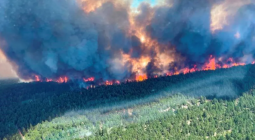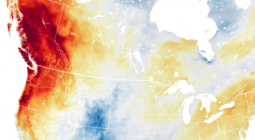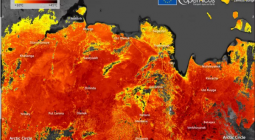Canada-US heatwave death toll feared more than 300 as Trudeau and Biden warn ‘this won’t be the last’
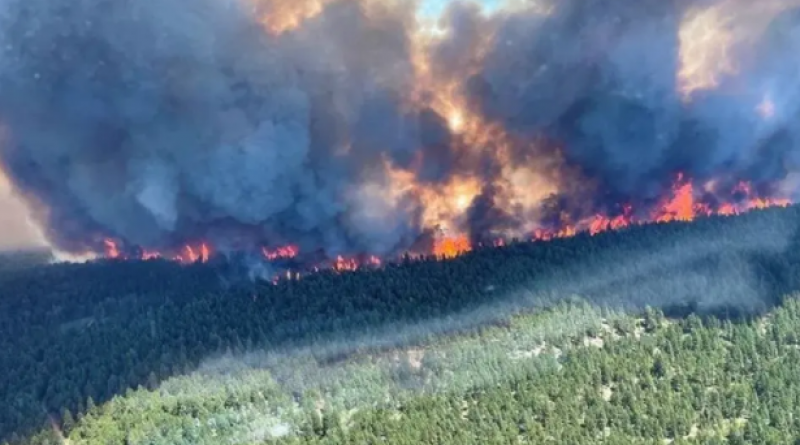
Portland, Oregon, reached 46.7C (116F) on Monday, a region which normally sees highs of around 26C (78.8F) this time of year
The deadly “once-in-a-millennium” heatwave bearing down on parts of North America has broken temperature record after temperature record amid a mounting death toll, feared to be more than 300 people.
In the small village of Lytton, British Columbia, Canada’s temperature record was broken on Tuesday when the mercury hit 49.6C (121.2F). This topped the previous record breaker, on Monday, of 47.9C (118.2F) and Sunday, 46.1C (115F).
The small community was evacuated on Wednesday as wildfires broke out nearby.
“The whole town is on fire,” Mayor Jan Polderman told CBC News. “It took, like, a whole 15 minutes from the first sign of smoke to, all of a sudden, there being fire everywhere.”
The town’s MP Brad Vis later said that 90 per cent of Lytton had been destroyed by the wildfire, impacting up to 1,500 residents.
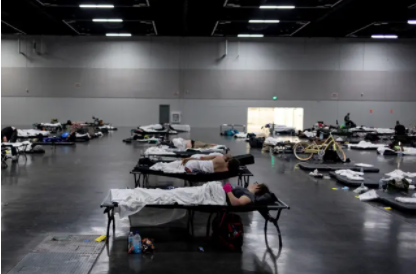
(Reuters)
In the US Pacific northwest, the city of Portland, Oregon, reached 46.7C (116F) on Monday, breaking the previous record of 44.4C (112F) on Sunday.
In Washington state, Chelan County outside of Seattle reached 48C (119F) on Tuesday.
This part of the world typically sees average highs of around 26C (78.8F) during the summer months.
President Joe Biden and Canada’s prime minister Justin Trudeau this week warned that the extreme weather was unlikely to be the last due to the ever-worsening climate crisis.
“We’ve been seeing more and more of this type of extreme weather event in the past years,” Mr Trudeau said on Wednesday. “So realistically, we know that this heatwave won’t be the last.”
At the White House, President Biden said climate change was driving “a dangerous confluence of extreme heat and prolonged drought”. He did so at a briefing on wildfire preparedness where he warned that the US needed to do more to get ready for what could be a record season.
The intense heatwave is being caused by what meteorologists call a “heat dome” – which traps concentrations of hot air over an area, blocking other weather systems from moving in.
The climate crisis, driven largely by decades of burning fossil fuels, is contributing to the heat and make such events more intense and more frequent.
As climate scientist, Dr Michael Mann, and climate non-profit director, Susan Joy Hassol, summed up in a New York Times opinion article this week: “Might a heat dome have developed out west this past week without climate change? Sure.
“Might it have been as extreme as what we’re witnessing without climate change? Almost surely not.”
Public officials in Canada and parts of the US warned of the growing fire risk due to the blistering temperatures, and urged people to take precautions.
Unlike other areas of the US where triple-digit temperatures can be a summer norm, in the Pacific northwest and western Canada, it’s less common for homes to have air conditioning.
At least one rolling blackout has been imposed in the northwest due to the strain on the electrical grid after 9,300 people lost power earlier in the week. Avista Utilities in Spokane, a city of more than 200,000 people, tried to limit outages to one hour on Wednesday. The company urged consumers to conserve power where they could.
The state of Oregon reported 63 deaths from the heatwave, and hundreds of hospital visits linked to heat-related illness. In Multnomah County, the medical examiner attributed heat deaths to hyperthermia, an abnormally high body temperature caused by a failure of the body to deal with heat. The victims ranged in age from 44 to 97 and a number of homeless people are among those who died.
Next door in Washington, at least 20 people have died from the heat with officials expecting that number to rise. Some people have been discovered dead in their homes, the fatalities linked to heat-related stress.
Dr Steve Mitchell, ER director at Harborview Medical Centre in Seattle, compared the droves of people arriving to the early days of the Covid-19 pandemic. “We got to the point where facilities were struggling with basic equipment, like ventilators,” he told the Seattle Times.
Another ER physician from Harborview, Dr Jeremy Hess, told the paper that those coming in were mostly elderly who lacked AC in their home, and who were found by others who checked on them.
BC’s chief coroner, Lisa Lapointe, reported at least 486 “sudden and unexpected deaths” in the last five days. She said an average number of deaths in that period would be about 165 people.
“While it is too early to say with certainty how many of these deaths are heat related, it is believed likely that the significant increase in deaths reported is attributable to the extreme weather,” Dr LaPointe said.
The soaring heat may have also killed a worker from Guatemala working at Ernst Nursery and Farms in St Paul, Oregon, on Saturday. The man, who was not named, only arrived in the US a few months ago, the AP reported.
The Independent has contacted Oregon OSHA, the state’s worker safety agency, for comment.
“The employee was working on a crew moving irrigation lines. At the end of the shift he was found unresponsive in the field,” agency spokesman Aaron Corvin told the AP.
According to The Center Square, only three states – Washington, California and Minnesota – specifically regulate heat exposure. Oregon OSHA inspectors can give employers heat-related violations but they are not banned from having employees work in excessive heat.
The United Farm Workers has also urged Washington governor Jay Inslee, who leads another state with a large agricultural sector, to do more. Unlike workers in California, Washington state farm workers do not have the right to work shade and breaks amid extreme temperatures, the union said.
“I was off today so I was helping distribute water and information to the cherry harvesters,”said Martha Acevedo, a wine grape worker in Sunnyside, Washington last week. “They were struggling. No shade, not even cold water. I’m afraid people will die. This is beyond hot weather. This is an emergency.”
The extreme temperatures were also spiking the threat of wildfires. The US National Interagency Fire Center, which coordinates fire response at a federal level, reports that California and more of the US northwest is facing above normal fire potential for the next two months.
A number of fire departments began issuing warnings ahead of Fourth of July weekend, banning the use of fireworks.
While temperatures began to ease off in the US northwest and western Canada on Thursday, the weather system was shifting east, keeping Canada’s interior regions in the triple digits along with the US plains.
2 July 2021
INDEPENDENT

